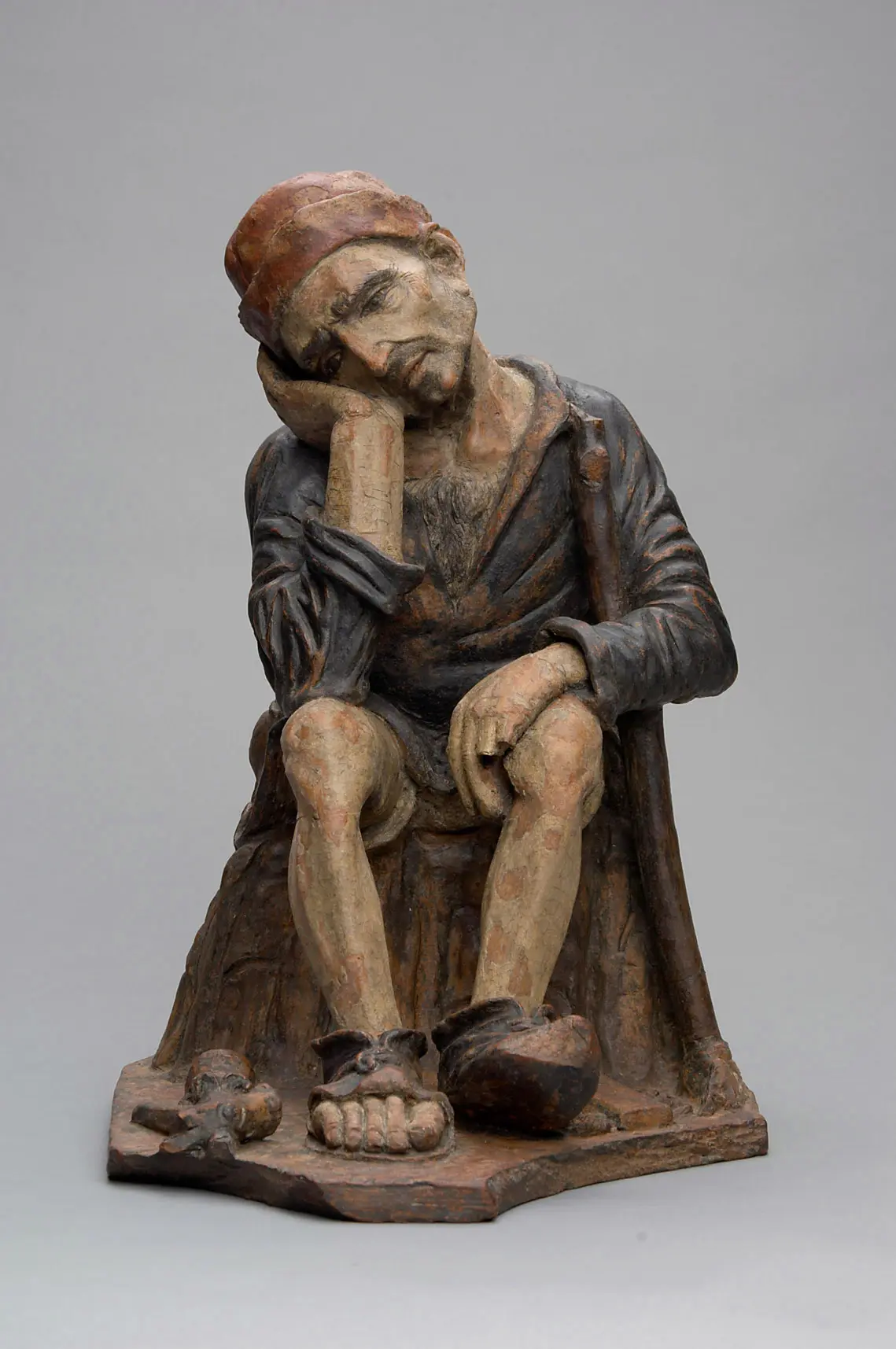Sympathy and consolation
Title:
Reaper at Rest
Artist:
Andrea Briosco, gen. Riccio (1470 Trient (?) - 1532 Padua)
Time:
ca. 1500
The signs of unceasing physical labour are evident: hand, shoulder, and knee prop up a weary head. He has sat down to rest outdoors. Near the resting figure lie a whetstone, its container, and sharpening equipment.
The scythe, the mower’s most important tool, has been preserved only in part. His left foot originally rested upon the upward arching blade that has broken away. The roughly finished shaft of the stick can be seen between elbow and hip.
Melancholy and exhaustion recall the basis of human life: enduring recurring toil without bitterness or resentfulness.

We do not known whether the sculpture was part of a larger scene, or conceived as a single figure. Andrea Riccio, who sculpted in bronze, was an exponent of northern Italian Humanism. Observations drawn from the real life of his homeland influenced his work.

Christ at Rest
c. 1525
Bode-Museum Berlin, inv. no. 8347
The figure’s gesture resembles the classic posture of mourning seen in representations of Christ’s final rest, which were created during the same period in southern Germany. These depict the moment just before the crucifixion after the crown of thorns was thrust upon Christ’s head.
More from the series #The Face of Europe
Explore Kunstgeschichten
Discover varied essays on a wide range of artworks from our extensive collection.
